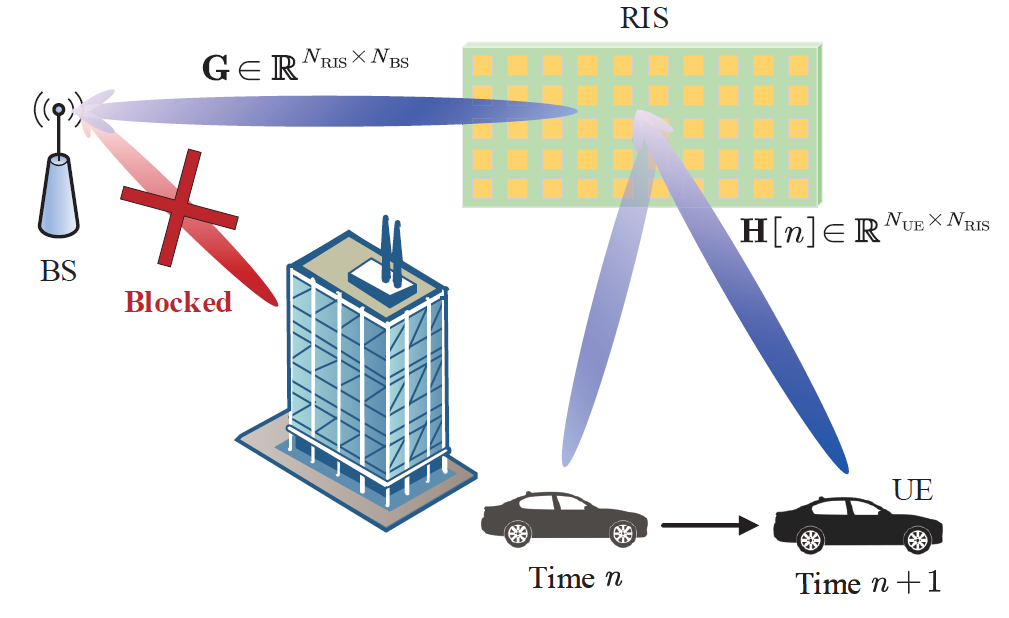RIS-Aided 6G Communication System With Accurate Traceable User Mobility
Published in IEEE Transactions on Vehicular Technology, 2022
Recommended citation: Zhang, Peng, Jiayi Zhang, Huahua Xiao, Hongyang Du, Dusit Niyato, and Bo Ai. "RIS-Aided 6G Communication System With Accurate Traceable User Mobility." IEEE Transactions on Vehicular Technology, to appear, 2022. https://ieeexplore.ieee.org/document/9920168
Abstract: Reconfigurable intelligent surface (RIS) can effectively improve the performance of 6G communication systems by providing additional LoS paths. Although the beam alignment is necessary in 6G communication system due to the user mobility, the deployment of RIS increases significantly the complexity of beam tracking, making it impractical to apply directly conventional schemes. To this end, we study a timevarying RIS-aided millimeter wave (mmWave) system, a robust complex-valued extended Kalman filter method is proposed to tackle the beam alignment problem. More specifically, the proposed scheme achieves 17% performance gain compared to conventional training-based method. The impact of the number of RIS elements is investigated, there exists corresponding optimal number of RIS elements in terms of the minimum of the mean square error of the estimated beam angle. A simple but efficient algorithm to obtain the optimal number of RIS elements is presented. Simulation results demonstrate that, by employing the RIS in mmWave communication systems, the performance of beam tracking can be enhanced by 37% with proposed algorithms.
Index Terms: Beam tracking, reconfigurable intelligent surface, mmWave, mobility.

Fig. 1: System diagram of RIS-aided mmWave communication system.

Fig. 3: MSE of AoD versus each time slot at SNR = 0 dB with different number of RIS elements.
